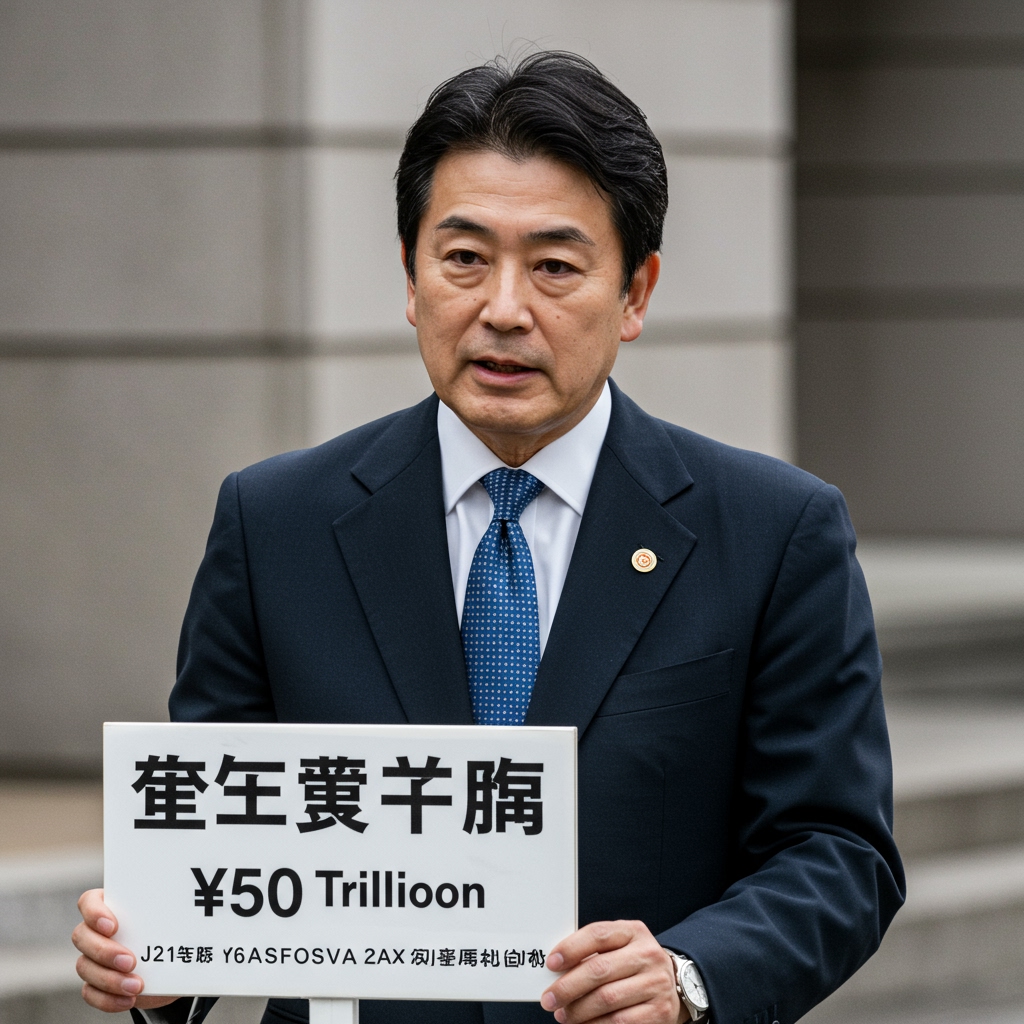Japan Approves Sweeping Economic Stimulus Package
Tokyo, Japan — Japan’s national legislature, the Diet, today decisively approved a monumental economic stimulus package valued at an estimated \u00a550 trillion. The comprehensive legislation represents a significant governmental effort to invigorate the nation’s economy, which has faced persistent challenges including deflationary pressures and the lingering impacts of the global pandemic. The package, designed to be multi-faceted in its approach, secured overwhelming approval from lawmakers, signaling broad political consensus on the need for aggressive economic intervention.
This substantial injection of funds targets key areas identified as crucial for fostering sustainable growth and enhancing domestic resilience. A primary pillar of the package is the bolstering of domestic consumption. This is intended to be achieved, in part, through direct cash subsidies specifically aimed at low-income households. Proponents argue that providing financial assistance directly to those with the highest propensity to spend will rapidly stimulate demand, thereby boosting retail sales and supporting businesses across various sectors. The specific mechanisms for distributing these subsidies and eligibility criteria are expected to be detailed in subsequent implementation guidelines, but the intent is clearly to put money into the hands of consumers quickly.
Investing in Future Growth: Infrastructure and Innovation
Beyond immediate consumption support, a significant portion of the \u00a550 trillion package is earmarked for strategic investments in critical infrastructure projects. Among the highlighted initiatives are upgrades to Japan’s renowned high-speed rail network. Investments in transportation infrastructure are seen as vital for improving connectivity, reducing logistical costs, and facilitating both business travel and tourism, all of which contribute to long-term economic vitality. Such projects also create jobs in the construction and related industries, providing another layer of stimulus. The focus on infrastructure reflects a commitment not just to short-term boosts but to enhancing Japan’s economic foundation for decades to come.
Additional elements of the package, though not detailed exhaustively in the initial summary, are expected to include measures supporting small and medium-sized enterprises (SMEs), promoting digital transformation, fostering green technologies, and strengthening supply chain resilience. The ‘comprehensive’ nature of the package suggests a broad range of initiatives designed to address structural issues and prepare the Japanese economy for the evolving global landscape.
Government’s Rationale: Countering Deflation and Adapting Post-Pandemic
Prime Minister Fumio Kishida has been a key advocate for this stimulus measure. Speaking on the significance of the approved package, Prime Minister Kishida stated unequivocally that it is designed with clear strategic objectives: to counter persistent deflationary pressures and to adapt the economy for the complex challenges arising in the post-pandemic era. Deflation, characterized by a sustained decrease in the general price level, has been a long-standing economic issue in Japan, potentially discouraging spending and investment as consumers and businesses postpone purchases in anticipation of lower prices. The large-scale stimulus aims to break this cycle by generating demand and encouraging economic activity.
The adaptation for post-pandemic challenges acknowledges the fundamental shifts in global commerce, work patterns, and consumer behavior brought about by the COVID-19 crisis. The package seeks to support industries most affected by the pandemic while also investing in sectors and technologies poised for future growth, ensuring Japan remains competitive and resilient in a transformed world economy. Prime Minister Kishida’s government has consistently emphasized the need for a proactive approach to economic management, moving beyond reactive measures to shape Japan’s future economic trajectory.
Expert Perspectives and Lingering Concerns
Economists and policy analysts have offered varied perspectives on the approved stimulus package. Many experts believe the measure reflects a proactive stance by the Japanese government in addressing economic headwinds. They see the sheer scale of the stimulus and its multi-pronged approach as a determined effort to prevent economic stagnation and foster a robust recovery. This proactive approach is also viewed by some as following recent global discussions among major economies about the necessity of fiscal support in the current uncertain environment. The G7 and other international forums have highlighted the role of government spending in complementing monetary policy, and Japan’s action aligns with this broader trend.
However, alongside the acknowledgment of the proactive stance, significant concerns remain, particularly regarding the national debt. Japan already holds the highest ratio of public debt to GDP among developed nations. Adding another \u00a550 trillion in spending, even if spread over multiple budgets or years, will inevitably add to this burden. Critics and cautious observers worry about the long-term fiscal sustainability and the potential implications for future generations and the government’s ability to respond to future crises. Balancing the immediate need for stimulus with the imperative of fiscal responsibility remains a critical challenge for policymakers in Tokyo.
In conclusion, the Diet’s overwhelming approval of the \u00a550 trillion economic stimulus package marks a pivotal moment in Japan’s efforts to navigate contemporary economic challenges. Targeting both immediate consumption needs through subsidies and long-term growth via infrastructure investment, the package embodies the government’s strategy to combat deflation and adapt the economy for the post-pandemic world. While lauded by many as a necessary proactive measure, the package also intensifies scrutiny on Japan’s already considerable national debt, setting the stage for ongoing debates about the nation’s fiscal path forward.





